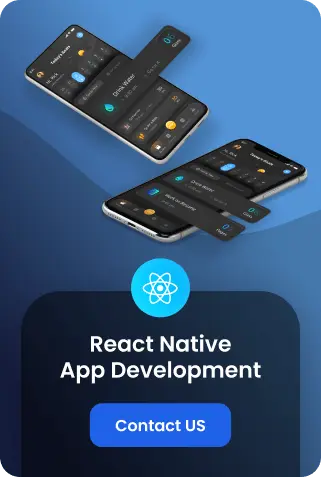ReactJS is a popular JavaScript library used for building user interfaces. It has gained widespread popularity due to its efficiency, flexibility, and reusability of components, which allows developers to create complex web applications with ease. The ability to break down a user interface into smaller, reusable components not only streamlines the development process but also makes code maintenance more manageable.
One key aspect that makes ReactJS powerful is the use of environment variables. These variables enable developers to manage different configurations for various environments, such as development, testing, and production. This ensures that applications can be easily adapted to different stages of deployment without altering the core codebase, thereby reducing errors and improving reliability.
Additionally, ReactJS’s virtual DOM (Document Object Model) ensures that updates are performed efficiently, improving the overall performance of applications. The virtual DOM acts as an intermediary between the actual DOM and the application’s state, allowing ReactJS to make precise updates and minimize the number of costly direct manipulations to the actual DOM. This optimization leads to faster rendering times and a smoother user experience.
ReactJS also benefits from a strong community and extensive resources, including tutorials, forums, and libraries of pre-built components. This vibrant ecosystem not only accelerates the learning curve but also provides robust support for problem-solving and innovation. As a result, learning and mastering ReactJS can significantly enhance a developer’s ability to create dynamic, responsive, and high-performance user interfaces, ultimately leading to more engaging and user-friendly web applications. In this article, we will have a look on ReactJS Environment Variables.
What are Environment Variables?
Environment variables are dynamic values that can be accessed by applications during runtime, and they play a crucial role in modern software development. These variables provide a way to configure and customize application behavior without hard-coding values into the source code, thus allowing developers to change the environment settings without modifying the codebase. This approach not only offers more flexibility but also facilitates easier management of different configurations for various environments, such as development, testing, and production.
For instance, in a development environment, an application might connect to a local database, while in a production environment, it would connect to a remote, scalable database. Environment variables make such transitions smooth and efficient. They are stored in the environment where the application is running and can be accessed using specific commands or libraries depending on the programming language being used. Commonly, developers use tools like Docker or Kubernetes to manage these variables in containerized environments.
In ReactJS, environment variables can be set using tools like Create React App, which simplifies the setup and usage of these variables. Developers can also manually configure environment variables through configuration files, such as .env files, which are loaded at runtime. This method ensures that sensitive information, like API keys and database credentials, can be managed securely and efficiently without exposing them in the source code, thereby enhancing security and maintainability of the application.
Why are environmental variables so crucial in the development process?
Environmental variables play a vital role in the development process due to their ability to configure and customize application behavior without hard-coding values into the source code. This provides more flexibility and allows for easier management of different configurations for various environments, such as development, testing, and production.
Moreover, environmental variables are essential for maintaining security in sensitive applications by allowing developers to store confidential information like API keys and database credentials outside of the source code, thus minimizing the risks of exposing them.
In addition, managing environmental variables is made more manageable with tools like Docker or Kubernetes in containerized environments. These tools provide a centralized location for managing variables, ensuring consistency across multiple environments and making deployment processes more streamlined.
Also Read: How to Hire Dedicated ReactJS Developers
Types of ReactJS ENV Variables
There are two types of ReactJS environmental variables: build-time and run-time variables.
- System-defined Environment Variables
System-defined environment variables are pre-set by the operating system and are accessible to all applications on a given system. These include variables such as `PATH`, `HOME`, and `USERNAME`. ReactJS can access these variables using the `process.env` object.
- User-defined environment variables
User-defined environment variables are created and managed by the user to suit specific needs. They are typically used for storing sensitive information or configuration settings that vary between different environments.
Why Do You Need Environment Variables?
Environment variables serve as a crucial component in modern software development, providing several benefits such as:
1. The Secret Keepers of Sensitive Information
Developers often need to store sensitive information, such as API keys and database credentials, in their code. By utilizing environmental variables, this confidential data can be stored outside of the source code, reducing the risk of it being exposed.
2. Promoting a Clean and Organized Codebase
Using environment variables allows developers to keep their codebase clean and organized. Instead of hard-coding values into the source code, they can be referenced using environmental variables, making the code easier to read and maintain.
3. Seamless Transition Between Environments
In a typical software development workflow, applications are deployed to various environments, such as development, staging, and production. Environment variables make it simple to switch between these environments without having to modify the code.
4. The Power of Customization
With user-defined environment variables, developers have the flexibility to customize their applications based on specific needs and preferences. This allows for a more efficient and personalized development process.
How to Set up the .env file Reactjs?
Setting up the .env file in Reactjs is a simple process that involves a few steps:
Creating Your .env File
Begin by creating a .env file in the root directory of your Reactjs project. This is where you will store all your environment variables.
Defining Your Variables
Next, define your variables inside the .env file using the format `REACT_APP_<variable_name>=<value>`. It is essential to prefix your variable names with “REACT_APP_” to ensure they are recognized by React’s build system.
Using Your Variables
To use your environmental variables in your code, simply reference them using `process.env.REACT_APP_<variable_name>`. For example, if you have defined an API key as `REACT_APP_API_KEY=12345`, you can use it in your code as `process.env.REACT_APP_API_KEY`.
Naming Conventions: The Key to ReactJS Environment Variables
When naming your environment variables, it is important to adhere to proper naming conventions. A few things to keep in mind when naming your variables are:
- Use all capital letters.
- Separate words with underscores instead of spaces or dashes.
- Be descriptive but concise.
Following these guidelines will make it easier to read and manage your environment variables in the long run.
How to Define Variables in the .env File
When defining variables in your .env file, there are a few things to keep in mind:
- Do not enclose the value of your variables in quotes.
- Separate multiple values with commas.
- Use escape characters for special characters or symbols.
Example: `REACT_APP_API_KEY=ABC123, DEFG456`
How to use Environment Variables in ReactJS
Now that you have defined and named your variables in the .env file, it’s time to start using them in your ReactJS code. Here are some examples of how you can use your environment variables:
- Storing API keys or passwords: Instead of hardcoding sensitive information into your code, store them as environment variables for added security.
- Configuring different environments: You can use different sets of environment variables for development, testing, and production environments.
- Customizing user experience: You can use environment variables to define certain features or settings that can be customized by each individual user.
Handling Different Environments
ReactJS provides a built-in process.env.NODE_ENV variable to differentiate between development and production environments. This allows you to set different variables for each environment without having to manually change the code. Here’s an example of how you can use this variable:
if (process.env.NODE_ENV === ‘production’) {
// do something for production environment
} else if (process.env.NODE_ENV === ‘development’) {
// do something for development environment
}
“`
Read More: How to Hire AngularJS Developers for Web App Development?
The best approach to using reactjs env file
It is important to note that while environment variables can be useful, they should not be overused. It is best to only use them for sensitive information or when necessary for different environments. Storing too many environment variables can make your code more complex and difficult to maintain.
1. Mapping Environment Variables to Readable Names
When setting up your environment variables, it is important to use readable names that indicate their purpose. This will make it easier for you or other developers to know which variable is being used for what. Additionally, consider organizing your variables into categories or groups based on their function, such as configuration settings, API keys, and database credentials. Proper naming and organization can save time during development and maintenance, reduce the likelihood of errors, and enhance the overall readability of your codebase.
2. Avoid Adding Strings or Space Characters in Environment Variables
Environment variables should not contain any strings or spaces. This can lead to unexpected errors when trying to access the variable in your code. It is best to keep them simple and use only alphanumeric characters, underscores, and dashes.
3. Store Sensitive Information in a .env File
Sensitive information such as API keys, database credentials, and other secrets should not be directly stored in code or pushed to a version control system. Instead, they should be stored securely in a separate .env file that is not shared publicly. This ensures that your sensitive information remains protected and confidential.
4. Use a Dotenv Library to Load Environment Variables
To use environment variables in your code, you will need to load them into your application. Instead of manually parsing the .env file, it is recommended to use a dotenv library that automatically loads the variables into your code when the application starts. This simplifies the process and reduces the risk of errors.
In Conclusion
Throughout this discussion, we’ve delved into the intricate world of environment variables in ReactJS. These invaluable tools fortify our applications with security, efficiency, and flexibility. Environment variables act as protectors of sensitive information, safeguarding crucial data such as API keys and database credentials. They contribute to a clean and organized codebase, simplifying the development process. By facilitating seamless transitions between development, testing, and production environments, they make our applications versatile and adaptable. Furthermore, they enable customization, allowing you to fine-tune your application to meet specific requirements.
Should you need any additional guidance or expertise, don’t hesitate to reach out to us. iTechnolabs IT Solutions boasts a team of skilled ReactJS developers who are ready to help you achieve your project goals. Our knowledgeable and experienced developers provide reliable support for all your React needs, whether you’re facing performance issues, scalability challenges, or other aspects of your React application. Contact us today to learn more about our ReactJS development services and discover the advantages of working with our expert team!
FAQs
How can I use environment variables in a ReactJS project?
You can use environment variables in a ReactJS project by setting them up in a dotenv file and then loading them into your application using a library such as dotenv or react-dotenv. You can also set them directly in your hosting environment, such as through Heroku’s Config Vars.
How do I create a .env file in a ReactJS project?
To create a .env file in a ReactJS project, first, make sure you have a dotenv library installed. Then, in your project’s root directory, create a new file called “.env”, and add your environment variables in the format of “KEY=VALUE”. Make sure to keep your sensitive information, such as API keys or passwords, secure by not pushing the .env file to any public repositories.
Can I use different .env files for different environments in my ReactJS application?
Yes, you can have multiple .env files for different environments in your ReactJS application. This allows you to have separate environment variables for development, testing, and production environments.
How do I get the value of an environment variable in my ReactJS code?
To get the value of an environment variable in your ReactJS code, you can use the process.env object and access the variable by its key. First, ensure you have a .env file in the root of your project containing your environment variables. For example, if your .env file has a variable named “API_KEY”, you can access it in your code by using “process.env.API_KEY”. It’s important to note that these variables should be prefixed with “REACT_APP_” to be recognized by Create React App, so your .env file should actually have “REACT_APP_API_KEY”. This way, your code will use “process.env.REACT_APP_API_KEY” to access the value. This practice helps keep sensitive information secure and maintains a clean codebase.








